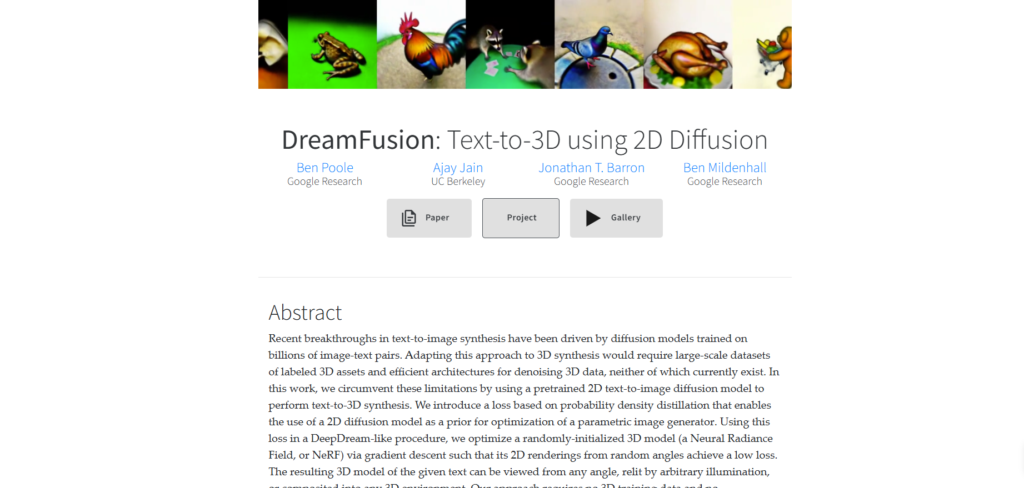DreamFusion 3D is an innovative text-to-3D synthesis tool that transforms text descriptions into high-quality 3D models using 2D diffusion techniques. By leveraging pretrained text-to-image diffusion models, DreamFusion optimizes Neural Radiance Fields (NeRFs) to produce relightable 3D objects with intricate geometry and texture.
This cutting-edge approach eliminates the need for large 3D datasets by utilizing text-to-image diffusion priors. Users can create 3D assets from captions like “a squirrel playing the saxophone” or “a wooden carving of an eagle,” making it accessible for varied creative applications.
Ideal for industries like gaming, VR/AR, and content creation, DreamFusion bridges the gap between text and 3D asset generation with unparalleled precision and ease.
Features of DreamFusion 3D
- Text-to-3D Synthesis: Generate high-fidelity 3D models directly from descriptive captions using Imagen’s pretrained diffusion model.
- High-Quality Geometry and Texture: Outputs relightable 3D objects with depth, surface geometry, and normals optimized for realism.
- NeRF-Based Representation: Utilizes Neural Radiance Fields to enable smooth integration into 3D environments.
- Scene Optimization with SDS: Employs Score Distillation Sampling to optimize 3D scenes efficiently without requiring 3D training data.
- Exportable Meshes: Converts NeRF models into meshes using marching cubes for compatibility with 3D rendering tools.
Pros
- Enables detailed 3D asset generation without 3D training datasets.
- Compatible with existing 3D software via exportable meshes.
- Supports creative customization using simple text prompts.
Cons
- Requires significant computational resources for optimization.
- Outputs may need refinement for production-quality use.
Who Will Benefit Most from DreamFusion 3D
- Game Developers: For creating realistic and unique 3D assets.
- VR/AR Designers: Generate immersive 3D objects for virtual environments.
- 3D Artists and Hobbyists: Experiment with text-based 3D modeling for creative projects.
